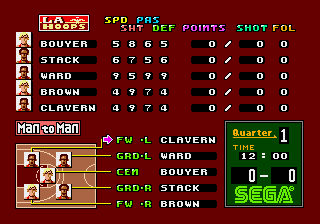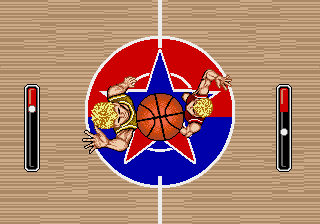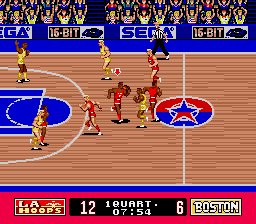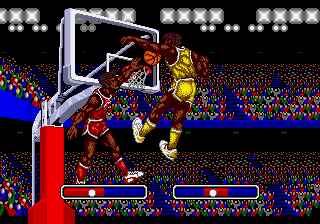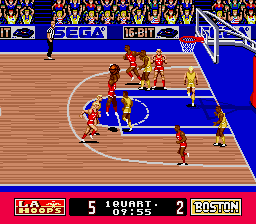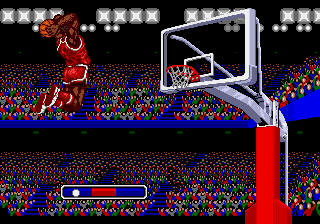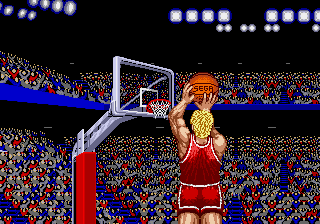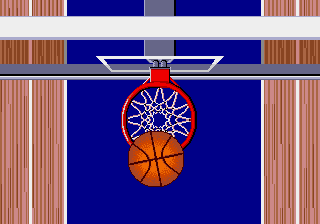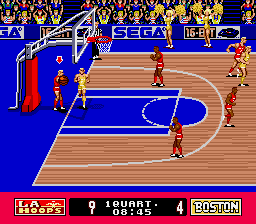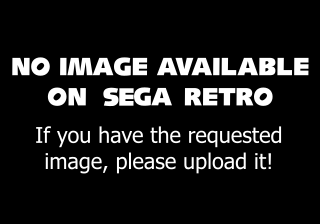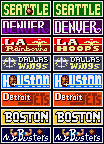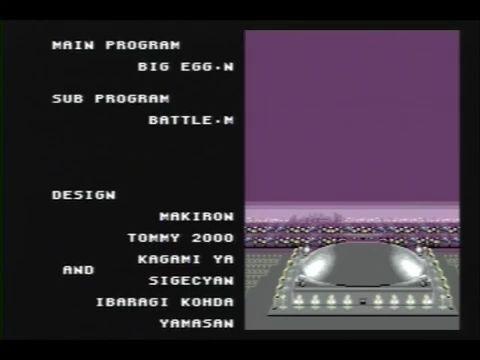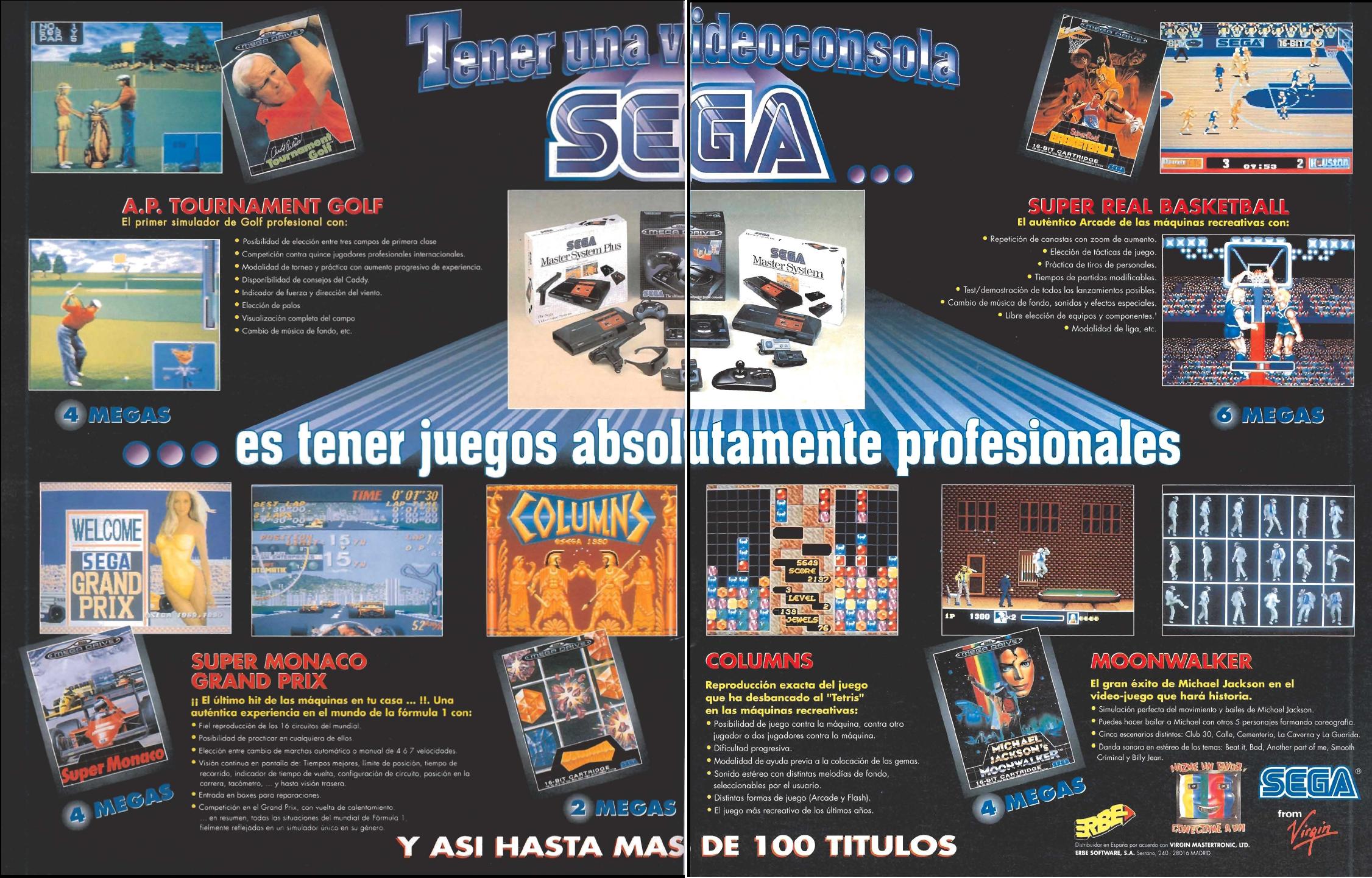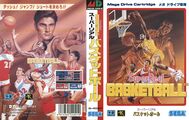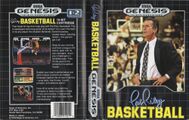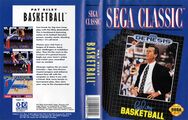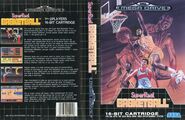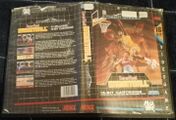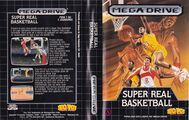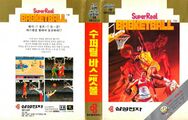Super Real Basketball
From Sega Retro
- For the unreleased Sega Master System game, see Pat Riley Basketball (Master System).
| |||||||||||||||||||||||||||||||||||||||||||||||||||||||||||
| Super Real Basketball/Pat Riley Basketball | |||||||||||||||||||||||||||||||||||||||||||||||||||||||||||
|---|---|---|---|---|---|---|---|---|---|---|---|---|---|---|---|---|---|---|---|---|---|---|---|---|---|---|---|---|---|---|---|---|---|---|---|---|---|---|---|---|---|---|---|---|---|---|---|---|---|---|---|---|---|---|---|---|---|---|---|
| System(s): Sega Mega Drive, Sega Mega-Tech | |||||||||||||||||||||||||||||||||||||||||||||||||||||||||||
| Publisher: Sega | |||||||||||||||||||||||||||||||||||||||||||||||||||||||||||
| Developer: Sega | |||||||||||||||||||||||||||||||||||||||||||||||||||||||||||
| Distributor: Ecofilmes (PT) Kanal 10 (SE rental) (older) Hent Gruppen (SE rental) (newer) Tec Toy (BR) Samsung (KR) | |||||||||||||||||||||||||||||||||||||||||||||||||||||||||||
| Sound driver: SMPS Z80 | |||||||||||||||||||||||||||||||||||||||||||||||||||||||||||
| Genre: Sports[1][2][3] (basketball) | |||||||||||||||||||||||||||||||||||||||||||||||||||||||||||
| Number of players: 1-2 | |||||||||||||||||||||||||||||||||||||||||||||||||||||||||||
|
Super Real Basketball (スーパーリアルバスケットボール) is a 1990 basketball game by Sega for the Sega Mega Drive. When released in the US, it was given the endorsement of professional basketball coach Pat Riley and renamed Pat Riley Basketball.
Contents
Gameplay
The game is a basketball simulation with a side-court perspective (though it adopts close-up views in certain situations). It has eight fictional teams and can be played by one or two players. Games are broken into four quarters that are each 12 minutes long.
Fouls are called for personal fouls (pushing and charging), out of bounds (moving with the ball outside of a boundary line), traveling (moving after the player stops dribbling), over and back (crossing back into one's own backcourt after crossing the mid-court line), 5-second violations (failing to throw the ball back into play within five seconds), 10-second violations (failing to move the ball over the mid-court line within ten seconds of taking possession), and 24-second violations (failing to shoot the ball in 24 seconds after taking possession). Unlike in the NBA, players are not thrown out of the game for committing six personal fouls.
Modes
There are two modes:
- Exhibition: Plays a single game. In one-player games, the player plays against the computer and cannot choose the computer's team. In two-player games, the players play against each other and cannot choose the same team.
- Tournament: Plays a three-round elimination tournament. In the first round, all eight teams compete, then the four winners advance to the semi-finals, and finally two teams face off in the finals. In two-player games, the players start in separate divisions and alternate playing their games, only playing against each other if both teams make it to the finals. Games between two computer teams are not shown, but their results appear after each game. There is no save system.
Either mode can be played by one or two players or in a demo mode between two computer players. There are three difficulty levels for computer players (Easy, Normal, and Hard).
Teams
Super Real Basketball lacks an official NBA license, so it uses eight fictional teams based in markets that have NBA teams. The names for some of the teams differ between the Japanese and the Western versions.
| JP version | US/EU versions |
|---|---|
| Seattle Rams | Seattle Bears |
| Denver Rocks | Denver Jammers |
| Los Angeles Rainbows | Los Angeles Hoops |
| Dallas Wings | Dallas Wings |
| Houston Legs | Houston Rebels |
| Detroit Jets | Detroit Jets |
| Boston Bug | Boston Bashers |
| New York Busters | New York Busters |
History
Prior to receiving the endorsement of NBA coach Pat Riley, the North American version of the game was known under the working title of Super Basketball. When Riley's endorsement was acquired, this title became Pat Riley's Slammin' and Jammin' Basketball before settling on the final name.
Production credits
- Main Program: Big Egg.N
- Sub Program: Battle.M
- Design: Makiron, Tommy 2000, Kagami Ya, and Sigecyan, Ibaragi Kohda, Yamasan
- Sound: Seba-Hiko
- Director: Revin.I
- Japanese cover artist: Yoshiaki Yoneshima (Room T)
Magazine articles
- Main article: Super Real Basketball/Magazine articles.
Promotional material
also published in:
- (US) #12: "July 1990" (1990-xx-xx)[12]
Physical scans
Mega Drive version
| Sega Retro Average | |||||||||||||||||||||||||||||||||||||||||||||||||||||||||||||||||||||||||||||||||||||||||||||||||||||||||||||||||||||||||||||||||||||||||||||||||||||||||||||||
|---|---|---|---|---|---|---|---|---|---|---|---|---|---|---|---|---|---|---|---|---|---|---|---|---|---|---|---|---|---|---|---|---|---|---|---|---|---|---|---|---|---|---|---|---|---|---|---|---|---|---|---|---|---|---|---|---|---|---|---|---|---|---|---|---|---|---|---|---|---|---|---|---|---|---|---|---|---|---|---|---|---|---|---|---|---|---|---|---|---|---|---|---|---|---|---|---|---|---|---|---|---|---|---|---|---|---|---|---|---|---|---|---|---|---|---|---|---|---|---|---|---|---|---|---|---|---|---|---|---|---|---|---|---|---|---|---|---|---|---|---|---|---|---|---|---|---|---|---|---|---|---|---|---|---|---|---|---|---|---|
|
| 74 | |
|---|---|
| Based on 31 reviews | |
| Mega Drive, US (Sega Classic) |
|---|
| Mega Drive, SE (rental; Kanal 10) |
|---|
| Mega Drive, SE (rental; Hent; black) |
|---|
Mega-Tech version
Technical information
- Main article: Super Real Basketball/Technical information.
References
- ↑ File:SRB MD JP Box.jpg
- ↑ File:SuperRealBasketball MD KR cover.jpg
- ↑ 3.0 3.1 https://sega.jp/history/hard/megadrive/software.html (Wayback Machine: 2020-07-20 09:51)
- ↑ https://groups.google.com/g/rec.games.video/c/mp9mP2K7UTE/m/zcd58dLbg-EJ
- ↑ GamePro, "August 1990" (US; 1990-xx-xx), page 52
- ↑ 6.0 6.1 VideoGames & Computer Entertainment, "June 1990" (US; 1990-0x-xx), page 50
- ↑ Sega Visions, "August/September 1992" (US; 1992-xx-xx), page 20
- ↑ 8.0 8.1 Raze, "April 1991" (UK; 1991-02-28), page 52
- ↑ 9.0 9.1 Sega Power, "April 1991" (UK; 1991-03-07), page 17
- ↑ File:Super Real Basketball MD credits.pdf
- ↑ Sega TV Game Genga Gallery, Graphic Sha, page 126
- ↑ Electronic Gaming Monthly, "July 1990" (US; 1990-xx-xx), page 9
- ↑ Electronic Gaming Monthly, "August 1990" (US; 1990-xx-xx), page 7
- ↑ GamePro, "July 1990" (US; 1990-xx-xx), page 61
- ↑ VideoGames & Computer Entertainment, "July 1990" (US; 1990-0x-xx), page 59
- ↑ GamePro, "November 1990" (US; 1990-xx-xx), page 100
- ↑ Game Players Sega Guide!, "Vol. 1, No. 1: Fall 1990" (US; 1990-10-xx), page 8
- ↑ Sega Visions, "Winter 1990/1991" (US; 1990-xx-xx), page 22
- ↑ 1700 igr dlya Sega, "" (RU; 2001-xx-xx), page 173
- ↑ 1700 igr dlya Sega, "" (RU; 2001-xx-xx), page 298
- ↑ Aktueller Software Markt, "Mai 1990" (DE; 1990-04-30), page 46
- ↑ Beep! MegaDrive, "March 1990" (JP; 1990-02-08), page 111
- ↑ (UK) (+0:00)
- ↑ Complete Guide to Consoles, "Volume IV" (UK; 1990-11-xx), page 35
- ↑ The Complete Guide to Sega, "" (UK; 1991-05-xx), page 49
- ↑ Console XS, "June/July 1992" (UK; 1992-04-23), page 135
- ↑ Computer & Video Games, "May 1990" (UK; 1990-04-16), page 103
- ↑ Computer & Video Games, "April 1991" (UK; 1991-03-16), page 79
- ↑ Mean Machines: The Essential Sega Guide, "" (UK; 1993-11-18), page 102
- ↑ Joystick, "Novembre 1990" (FR; 1990-1x-xx), page 104
- ↑ Sega Mega Drive Advanced Gaming, "December 1992" (UK; 1992-xx-xx), page 79
- ↑ Sega Mega Drive Advanced Gaming, "January 1993" (UK; 199x-xx-xx), page 94
- ↑ Mega Drive Fan, "August 1990" (JP; 1990-07-07), page 73
- ↑ Mega Play, "November/December 1990" (US; 1990-xx-xx), page 30
- ↑ MegaTech, "Xmas 1991" (UK; 1991-12-06), page 80
- ↑ Mean Machines, "April 1991" (UK; 1991-04-01), page 56
- ↑ Mean Machines Sega, "October 1992" (UK; 1992-09-xx), page 142
- ↑ Player One, "Février 1991" (FR; 1991-xx-xx), page 43
- ↑ Play Time, "6/91" (DE; 1991-05-10), page 114
- ↑ Power Play, "5/90" (DE; 1990-04-12), page 124
- ↑ Sega Power, "October 1991" (UK; 1991-09-05), page 54
- ↑ Sega Pro, "April 1992" (UK; 1992-03-19), page 30
- ↑ Sega Pro, "April 1993" (UK; 1993-03-11), page 68
- ↑ Sega Saturn Magazine, "September 1995" (JP; 1995-08-08), page 87
- ↑ Tricks 16 bit, "Tricks Sega Gold 800 igr" (RU; 1998-03-20), page 133
- ↑ User, "Mártios 1992" (GR; 1992-0x-xx), page 84
| Super Real Basketball | |
|---|---|
|
Main page | Comparisons | Magazine articles | Video coverage | Reception | Region coding | Technical information | Bootlegs
Prototypes: 1990-06-14
| |
- 1-2 player games
- JP Mega Drive games
- All JP games
- US Mega Drive games
- All US games
- Sega Classic games
- EU Mega Drive games
- All EU games
- PT Mega Drive games
- All PT games
- UK Mega Drive games
- All UK games
- SE Mega Drive games
- All SE games
- AU Mega Drive games
- All AU games
- BR Mega Drive games
- All BR games
- KR Mega Drive games
- All KR games
- Mega Drive games
- 1990 Mega Drive games
- All 1990 games
- Mega Drive basketball games
- Mega Drive sports games
- All sports games
- All arcade games
- Mega-Tech games
- Unknown year games
- Arcade basketball games
- Arcade sports games
- All games
- Super Real Basketball


